Market Harborough turns the clock back 80 years in huge WW2 event
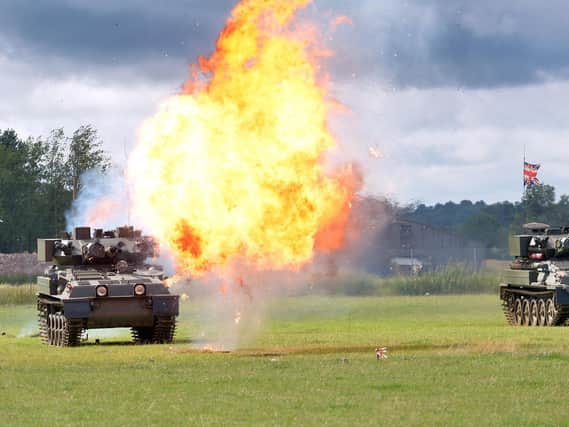

Thousands of enthralled people dramatically turned the clock back over 80 years in Market Harborough at the weekend as the Second World War roared back to life.
Men, women, children and an entire legion of families marched into the Showground on the edge of town to soak up the magnificent two-day Harborough at War festival.
Advertisement
Advertisement
And the battalions of fans really did show the old Dunkirk spirit of June 1940 as they defied torrential rainstorms, ferocious winds and plunging temperatures to turn out and turn up.
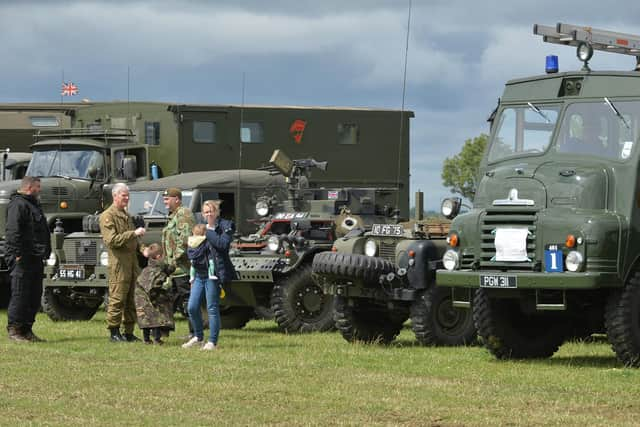

Mick Crook, 54, who staged the action-packed 48-hour show with his brother Steve, said: “It’s been just brilliant.
“We were hoping to draw in about 10,000 people across the weekend – and it’s been a huge success.
“We can’t control the weather – I wish we could – but apart from that we’ve loved it.”
Advertisement
Advertisement
Talking to the Harborough Mail in his gazebo as we were battered by a mini-monsoon on Sunday morning, Mick said: “It’s hammering down and we’re all getting drenched to the skin.
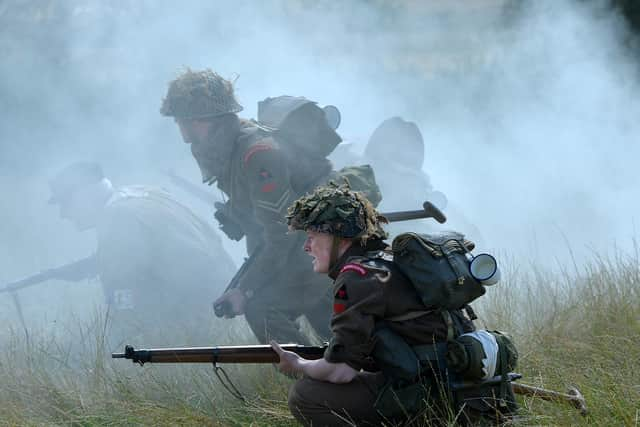

“But cars are still rolling in and people are still trooping in. “It’s wonderful to see – I’m almost lost for words.
“I want to say a massive thank you to the small army of volunteers we’ve got here, the army cadets for helping out and all our fantastc wartime re-enactors.
“And most all I want to salute the people of Market Harborough and right across Harborough and beyond for coming along.
Advertisement
Advertisement
“They’ve been absolutely amazing,” said Mick, as rainwater dripped off his head.
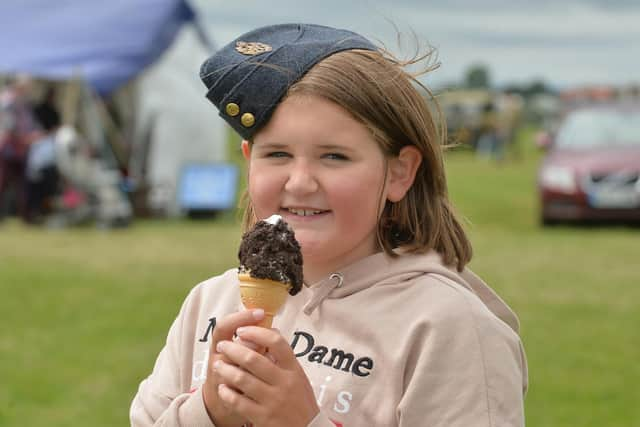

“We’ve had re-enactors come from all over England – and from as far away as Scotland and Ireland.
“We’ve got another dramatic car crunching today as well as a Centurion tank, an American M3 Lee tank and a Chieftain here at the Showground.
“We have got static displays, helicopters, all sorts of food and drink – as well as wartime singing and dancing.
Advertisement
Advertisement
“We put on our first Harborough at War show here back in 2019,” said Mick, who lives in Market Harborough.
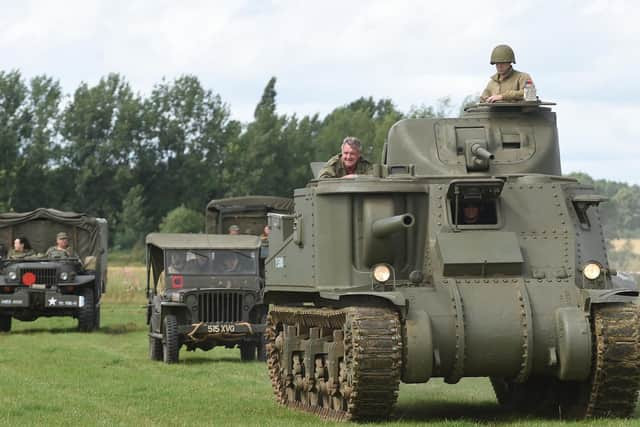

“It went well but it was just a third of the size of this one. “This is the biggest military spectacular for 18 months, if not longer, since we were all hit by the Covid pandemic.
“The re-enactors and military enthusiasts have been champing at the bit to get back out again and do their stuff – even in this rain and wind!
“And we were delighted and honoured to welcome a 106-year-old Second World War veteran called Fred here on Saturday.
Advertisement
Advertisement
“He lives nearby and he was thrilled to walk around and tour all the vehicles and meet everyone involved.
“This lovely old gentleman was a tank commander, a regular soldier, in the desert in Egypt when the war broke out in September 1939.
“He was away fighting for his king and country for six years.
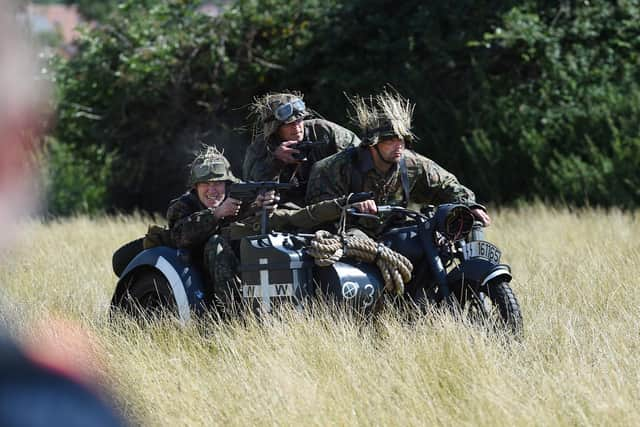

“No wonder we call them the Greatest Generation – and he was deservedly given a rousing round of applause from the crowd,” said Mick.
Advertisement
Advertisement
He also praised Harborough Bus Community for ferrying people by shuttle bus to the all singing all dancing all firing extravaganza at the Showground from Market Harborough’s Angel Street car park.
And Welland Valley Amateur Radio Society also made headlines on the global airwaves as they thrilled dozens of spectators.
Using an ex-Army radio and the special callsign GB5HAW, enthusiasts made voice contact with other radio stars in Russia, Spain, Slovenia, Ukraine, Italy and Norway.
“Our test signals in Morse code were heard in the Czech Republic, Finland, Iceland, Germany and Sweden.
Advertisement
Advertisement
“Two young boys aged six and eight exchanged greetings on the air with radio amateurs in England,” said the society’s Andy Thomas.
“About 70 people learned how to send their names - from ADAM to WENDY - in Morse Code on a wartime signal training buzzer.
“We showed my collection of spy radios and in particular met the ‘French Maquis’ group who measured the "MCR-1" (Midget Communications Receiver 1), the type which were packed in biscuit tins and parachuted to the French Resistance.
“And using a repeater station in Cold Ashby we used a hand-held radio to introduce the event to stations as far apart as Leicester and Buckingham,” said Andy.